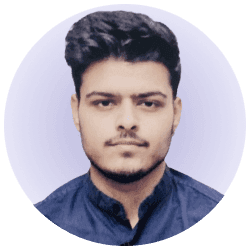Football
VAR: When Was It First Introduced in Football?
Interestingly on the international stage, VAR was first used in a friendly clash between Italy and France on September 1, 2016.

VAR FIFA Women's World Cup//Getty Images
Football is ever-evolving and technology has become a big part of the game we all love in recent years. The involvement of the Video Assistant Referee (VAR) is possibly one of the biggest changes in football history.
The involvement of VAR in football was to help referees and to make more correct and accurate decisions. VAR is essentially a video replay system designed to help match officials review key moments. But VAR can only intervene in four specific situations where a ‘clear and obvious error’ or ‘serious missed incident’ might have occurred.
These reviewable incidents are:
- Goals/no goals: This includes offsides checks, encroachment during penalties and whether the ball crossed the line.
- Penalty/no penalty: This includes checking if there was contact inside the box, if it was a simulation, or if the wrong foul was given.
- Direct red cards (not second yellows): This includes reviewing if the foul was serious enough for a red card, if it was mistaken identity, or if the wrong player was sent off.
- Mistaken identity: This is used to check if the referee sent off the wrong player.
How was VAR born and brief history?
The idea of VAR was first talked about as part of the ambitious Refereeing 2.0 project devised by the Royal Netherlands Football Association (KNVB) in 2010. The project planned the effective use of technology in making on-field decisions by football referees/officials more error-free.
Goal line technology was also a part of the same project and it received wider acceptance way earlier than VAR. FIFA accepted and adopted the goal line technology in 2012. While for VAR, the first-ever trial was conducted during a friendly match between Eredivisie clubs PSV and FC Eindhoven in July 2016.
On the international stage, VAR was first used in a friendly clash between Italy and France on September 1, 2016. The first professional match where VAR was employed was an official first-round KNVB Cup tie between Ajax and Willem II on September 21, 2016.
The match between Ajax and Willem II was also the first time we saw the now widely accepted and normalised pitchside monitor, make its debut.
The use of VARs in football was first included in the Laws of the Game in 2018-19. The German Bundesliga and Italian Serie A adopted VAR in the 2017-18 season. The Spanish LaLiga and French Ligue 1 adopted VAR in the 2018-19 season. The 2018-19 season also saw VAR being introduced in the UEFA Champions League. The English Premier League was the last of the top five European leagues to adopt VAR, when it was introduced in the 2019-20 season.
The use of VAR during the 2018 FIFA World Cup in Russia was seen as a major landmark and it has been since used in the 2022 FIFA World Cup in Qatar.
The 2017 FIFA Confederations Cup was the first international tournament where VAR was used. On the other hand, the Australian A-League was the first top-flight league to adopt the Video Assistant Referee (VAR) in 2017.
What is the public perception of the Video Assistant Referee (VAR)?
Although VAR was brought into football to help officials and reduce errors. However, the public perception of the Video Assistant Referee has been very different. Every season since its introduction, there have been many high-profile errors, leading to questions being asked by fans and media worldwide.
Many fans have even called for VAR to be removed from the game once and for all and to go back to the old system. But why is that? What are the limitations of VAR and the opposite perspective of VAR?
As it is the case for each and every entity in life, nothing is perfect. So is the case for VAR, there are certain limitations within the system. One of the biggest limitations is during the offside calls, the use of lines and technology to measure millimetre-accurate offside by the officials has been under the microscope. There have been many errors and the offside calls take very long. While semi-automated offside technology has been introduced, but all the top leagues are yet to implement the technology.
Another major problem is fan engagement, lengthy VAR reviews lead to goal celebrations being ruined and the emotion of your favourite team scoring a goal goes away as every single goal is double-checked and cleared by VAR. Consistency is another big problem with VAR, with different calls for similar situations in each game.
While fans have questioned certain referees’ reluctance to consult VAR, on the other hand, certain referees’ over-dependence on VAR has also been put under the microscope.
VAR looks set to stay in football and play a big part in it for the foreseeable future, but a balance still needs to be found for it to be accepted worldwide by fans.

With over a decade of experience in sports writing, Hardik Malhotra has built a distinguished career in the internet industry. His expertise spans across various domains including Art Direction, Web Content Writing, and Content Management, all underscored by a high degree of initiative. Hardik’s passion for sports is reflected in his professional journey and personal interests.